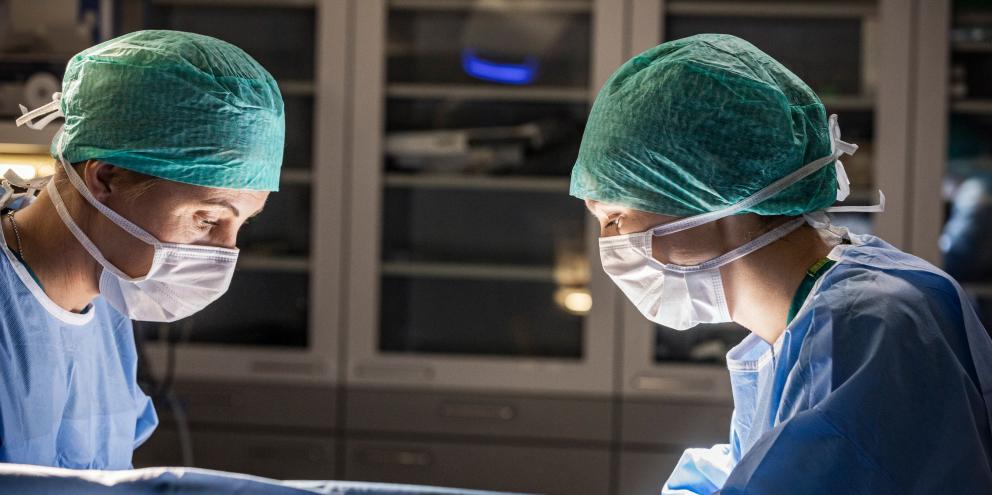
Articles on research conducted with GE Healthcare NMT modules
Jung, W., Hwang, M., Won, Y. J., Lim, B. G., Kong, M.-H., & Lee, I.-O. (2016). Comparison of clinical validation of acceleromyography and electromyography in children who were administered rocuronium during general anesthesia: a prospective double-blinded randomized study. Korean Journal of Anesthesiology, 69(1), 21–26.
Kaufhold, N., Schaller, S. J., Stäuble, C. G., Baumüller, E., Ulm, K., Blobner, M., & Fink, H. (2016). Sugammadex and neostigmine dose-finding study for reversal of residual neuromuscular block at a train-of-four ratio of 0.2 (SUNDRO20). British Journal of Anaesthesia, 116(2), 233–240.
Salminen, J., van Gils, M., Paloheimo, M., & Yli-Hankala, A. (2016). Comparison of train-of-four ratios measured with Datex-Ohmeda’s M-NMT MechanoSensor™ and M-NMT ElectroSensor™. Journal of Clinical Monitoring and Computing, 30(3), 295–300.
Gaffar, E. A., Fattah, S. A., Omera, M. A., Atef, H. M., & Abdel-Aziz, M. A. (2015). Kinemyography (KMG) versus electromyography (EMG) neuromuscular monitoring in pediatric patients receiving rocuronium during general anesthesia. Med. J. Cairo Univ, 83(1), 121–128.
Blobner, M., Frick, C. G., Stäuble, R. B., Feussner, H., Schaller, S. J., Unterbuchner, C., … Fink, H. (2014). Neuromuscular blockade improves surgical conditions (NISCO). Surgical Endoscopy, 29(3), 627–636.
Ezer, F., Bezen, O., Saracoglu, A., Ozata, A. S., & Sengul, T. (2014). Comparison of acceleromyography and kinemyography monitoring methods during recovery period of neuromuscular block: 3AP3-9. European Journal of Anaesthesiology, 31, 38.
Stewart, P. A., Freelander, N., Liang, S., Heller, G., & Phillips, S. (2014). Comparison of electromyography and kinemyography during recovery from non-depolarising neuromuscular blockade. Anaesthesia and Intensive Care, 42(3), 378–384.
Todd, M. M., Hindman, B. J., & King, B. J. (2014). The implementation of quantitative electromyographic neuromuscular monitoring in an academic anesthesia department. Anesthesia & Analgesia, 119(2), 323–331.
Gaffar, E. A., Fattah, S. A., Atef, H. M., Omera, M. A., & Abdel-Aziz, M. A. (2013). Kinemyography (KMG) versus electromyography (EMG) neuromuscular monitoring in pediatric patients receiving cisatracurium during general anesthesia. Egyptian Journal of Anaesthesia, 29(3), 247–253.
Kim, W. H., Lee, J. J., Lee, S. M., Park, M. N., Park, S. K., Seo, D. W., & Chung, I. S. (2013). Comparison of motor-evoked potentials monitoring in response to transcranial electrical stimulation in subjects undergoing neurosurgery with partial vs no neuromuscular block. British Journal of Anaesthesia, 110(4), 567–576.
Liang, S. S., Stewart, P. A., & Phillips, S. (2013). An ipsilateral comparison of acceleromyography and electromyography during recovery from nondepolarizing neuromuscular block under general anesthesia in humans. Anesthesia & Analgesia, 117(2), 373–379.
Nitahara, K., Sugi, Y., Shigematsu, K., Haraga, I., Abe, S., & Higa, K. (2013). Recovery of train-of-four ratio to 0.70 and 0.90 is delayed in type 2 diabetes with vecuronium-induced neuromuscular block. European Journal of Anaesthesiology, 30(2), 80–84.
Sugi, Y., Nitahara, K., Katori, K., Kusumoto, G., Shigematsu, K., & Higa, K. (2013). Acceleromyography at the flexor hallucis brevis muscle underestimates residual neuromuscular blockade. The Open Anesthesiology Journal, 7(1), 26–29.
Ghodraty, M. R., Saif, A. A., Kholdebarin, A. R., Rokhtabnak, F., Pournajafian, A. R., Nikzad-Jamnani, A. R., … Nader, N. D. (2012). The effects of magnesium sulfate on neuromuscular blockade by cisatracurium during induction of anesthesia. Journal of Anesthesia, 26(6), 858–863.
Hans, G. A., Bosenge, B., Bonhomme, V. L., Brichant, J. F., Venneman, I. M., & Hans, P. C. (2012). Intravenous magnesium reestablishes neuromuscular block after spontaneous recovery from an intubating dose of rocuronium: a randomised controlled trial. European Journal of Anaesthesiology, 29(2), 95–99.
Phillips, S., Stewart, P. A., Freelander, N., & Heller, G. (2012). Comparison of evoked electromyography in three muscles of the hand during recovery from non-depolarising neuromuscular blockade. Anaesthesia and Intensive Care, 40(4), 690–696.
Dubois, P. E., Mitchell, J., Dransart, C., & D’Hollander, A. (2012). Datex-Ohmeda neuromuscular transmission electromyography module artefacts in clinical practice: case report and retrospective chart review. European Journal of Anaesthesiology, 29(5), 249–251.
Deckert, D., Lederer, W., & Khuenl-Brady, K. S. (2011). Unexpected failure of rocuronium-mediated neuromuscular blockade. Anaesthesia, 66(1), 58–59.
Sugi, Y., Nitahara, K., Higa, K., Kusumoto, G., & Shono, S. (2011). Comparison of the neuromuscular profile of the first dorsal interosseous muscle and the flexor hallucis brevis muscle as measured by electromyography. ISRN Anesthesiology, 2011.
Hans, G. A., Defresne, A., Ki, B., Bonhomme, V., Kaba, A., Legrain, C., … Hans, P. C. (2010). Effect of an intravenous infusion of lidocaine on cisatracurium-induced neuromuscular block duration: a randomized-controlled trial. Acta Anaesthesiologica Scandinavica, 54(10), 1192–1196.
Adamus, M., Gabrhelik, T., & Marek, O. (2008). Influence of gender on the course of neuromuscular block following a single bolus dose of cisatracurium or rocuronium. European Journal of Anaesthesiology, 25(7), 589–595.
Gilhuly, T. J., MacLeod, B. A., Dumont, G. A., Bouzane, A. M., & Schwarz, S. K. W. (2008). Improved neuromuscular blockade using a novel neuromuscular blockade advisory system: a randomized, controlled, clinical trial. Anesthesia & Analgesia, 107(5), 1609–1617.
Motamed, C., & Bourgain, J.-L. (2008). Computerized recording of neuromuscular monitoring and the risk of residual paralysis at the time of extubation. Journal of Clinical Monitoring and Computing, 22(4), 315–318.
Saitoh, Y., Oshima, T., & Nakata, Y. (2008). Monitoring of vecuronium-induced neuromuscular blockade during one-lung ventilation. Journal of Anesthesia, 22(4), 378–384.
Saitoh, Y., Oshima, T., & Nakata, Y. (2008). Recovery of neuromuscular blockade caused by vecuronium is delayed in patients with hypertriglyceridemia. Journal of Anesthesia, 22(1), 89–92.
Adamus, M., & Belohlavek, R. (2007). Fuzzy control of neuromuscular block during general anesthesia—system design, development and implementation. International Journal of General Systems, 36(6), 733–743.
Hänzi, P., Leibundgut, D., Wessendorf, R., Lauber, R., & Zbinden, A. M. (2007). Clinical validation of electromyography and acceleromyography as sensors for muscle relaxation. European Journal of Anaesthesiology, 24(10), 882–888.
Schumacher, P. M., Stadler, K. S., Wirz, R., Leibundgut, D., Pfister, C. A., & Zbinden, A. M. (2006). Model-based control of neuromuscular block using mivacurium: design and clinical verification. European Journal of Anaesthesiology, 23(8), 691–699.
Trager, G., Michaud, G., Deschamps, S., & Hemmerling, T. M. (2006). Comparison of phonomyography, kinemyography and mechanomyography for neuromuscular monitoring. Canadian Journal of Anesthesia, 53(2), 130–135.
Adamus, M., Belohlavek, R., Hropko, P., & Ludma, M. (2005). Predictability of rocuronium-induced neuromuscular block: A-456. European Journal of Anaesthesiology, 22, 120.
Hattori, H., Saitoh, Y., Nakajima, H., Sanbe, N., Akatu, M., & Murakawa, M. (2005). Gabexate mesilate hastens recovery from vecuronium-induced neuromuscular blockade. European Journal of Anaesthesiology, 22(1), 20–24.
Kopman, A. F., Chin, W. A., & Moe, J. (2005). Dose-response relationship of rocuronium: A comparison of electromyographic vs. acceleromyographic-derived values. Acta Anaesthesiologica Scandinavica, 49(3), 323–327.
Kopman, A. F., Chin, W., & Cyriac, J. (2005). Acceleromyography vs. electromyography: an ipsilateral comparison of the indirectly evoked neuromuscular response to train-of-four stimulation. Acta Anaesthesiologica Scandinavica, 49(3), 316–322.
Richard, A., Girard, F., Girard, D. C., Boudreault, D., Chouinard, P., Moumdjian, R., … Varin, F. (2005). Cisatracurium-induced neuromuscular blockade is affected by chronic phenytoin or carbamazepine treatment in neurosurgical patients. Anesthesia & Analgesia, 100(2), 538–544.
Vasella, F. C., Frascarolo, P., Spahn, D. R., & Magnusson, L. (2005). Antagonism of neuromuscular blockade but not muscle relaxation affects depth of anaesthesia. British Journal of Anaesthesia, 94(6), 742–747.
Mendonça, T., Lic, H. M., Lago, P., & Esteves, S. (2004). Hipocrates: a robust system for the control of neuromuscular blockade. Journal of Clinical Monitoring and Computing, 18(4), 265–273.
Motamed, C., Kirov, K., Combes, X., & Duvaldestin, P. (2003). Comparison between the Datex-Ohmeda M-NMT® module and a forcedisplacement transducer for monitoring neuromuscular blockade. European Journal of Anaesthesiology, 20(6), 467–469.
Saitoh, Y., Kaneda, K., Hattori, H., Nakajima, H., & Murakawa, M. (2003). Monitoring of neuromuscular block after administration of vecuronium in patients with diabetes mellitus. British Journal of Anaesthesia, 90(4), 480–486.
Santanen, O. A. P., Svartling, N., Haasio, J., & Paloheimo, M. P. J. (2003). Neural nets and prediction of the recovery rate from neuromuscular block. European Journal of Anaesthesiology, 20(2), 87–92.
Dahaba, A. A., von Klobucar, F., Rehak, P. H., & List, W. F. (2002). AS/3® neuromuscular transmission module (M-NMT) vs. mechanomyography for neuromuscular block monitoring. European Journal of Anaesthesiology, 19(3), 210–211.
Dahaba, A. A., von Klobucar, F., Rehak, P. H., & List, W. F. (2002). The neuromuscular transmission module versus the relaxometer mechanomyograph for neuromuscular block monitoring. Anesthesia & Analgesia, 94(3), 591–596.
Goldhill, D. R., Wainwright, A. P., Stuart, C. S., & Flynn, P. J. (1989). Neostigmine after spontaneous recovery from neuromuscular blockade: Effect on depth of blockade monitored with train-of-four and tetanic stimuli. Anaesthesia, 44(4), 293–299.
General and editorial articles & publications
Blobner, M., Hunter, J. M., Meistelman, C., Hoeft, A., Hollmann, M. W., Kirmeier, E., … Ulm, K. (2020). Use of a train-of-four ratio of 0.95 versus 0.9 for tracheal extubation: an exploratory analysis of POPULAR data. British Journal of Anaesthesia, 124(1), 63–72.
Kirmeier, E., Eriksson, L. I., Lewald, H., Fagerlund, M. J., Hoeft, A., Hollmann, M., … Blobner, M. (2019). Post-anaesthesia pulmonary complications after use of muscle relaxants (POPULAR): a multicentre, prospective observational study. The Lancet Respiratory Medicine, 7(2), 129–140.
de Boer, H. D., Carlos, R. V, & Brull, S. J. (2018). Is lower-dose sugammadex a cost-saving strategy for reversal of deep neuromuscular block? Facts and fiction. BMC Anesthesiology, 18(1), 1–5.
Naguib, M., Brull, S. J., Kopman, A. F., Hunter, J. M., Fülesdi, B., Arkes, H. R., … Johnson, K. B. (2018). Consensus statement on perioperative use of neuromuscular monitoring. Anesthesia & Analgesia, 127(1), 71–80.
Brull, S. J., & Kopman, A. F. (2017). Current status of neuromuscular reversal and Monitoring: Challenges and opportunities. Anesthesiology, 126(1), 173–190.
Naguib, M., Brull, S. J., & Johnson, K. B. (2017). Conceptual and technical insights into the basis of neuromuscular monitoring. Anaesthesia, 72(S1), 16–37.
Checketts, M. R., Alladi, R., Ferguson, K., Gemmell, L., Handy, J. M., Klein, A. A., … Pandit, J. J. (2016). Recommendations for standards of monitoring during anaesthesia and recovery 2015: Association of Anaesthetists of Great Britain and Ireland. Anaesthesia, 71(1), 85–93.
Renew, J. R., & Brull, S. J. (2016). The effect of quantitative neuromuscular monitoring on the incidence of residual neuromuscular blockade and clinical outcomes. Current Anesthesiology Reports, 6(2), 170–177.
Loughnan, T. E., & Loughnan, A. J. (2013). Overview of the introduction of neuromuscular monitoring to clinical anaesthesia. Anaesthesia and Intensive Care, 41(Suppl. 1), 19–24.
Grosse-Sundrup, M., Henneman, J. P., Sandberg, W. S., Bateman, B. T., Uribe, J. V., Nguyen, N. T., … Eikermann, M. (2012). Intermediate acting non-depolarizing neuromuscular blocking agents and risk of postoperative respiratory complications: prospective propensity score matched cohort study. British Medical Journal, 345: e6329, 1–14.
Kopman, A. F. (2011). Perioperative monitoring of neuromuscular function. In Monitoring in Anesthesia and Perioperative Care (pp. 261–273). Cambridge University Press.
Brull, S. J., & Murphy, G. S. (2010). Residual neuromuscular block: lessons unlearned. Part II: Methods to reduce the risk of residual weakness. Anesthesia & Analgesia, 111(1), 129–140.
Fuchs-Buder, T. (2010). Principles of neuromuscular monitoring. In Neuromuscular monitoring in clinical practice and research (pp. 24–72). Springer.
Murphy, G. S., & Brull, S. J. (2010). Residual neuromuscular block: lessons unlearned. Part I: Definitions, incidence, and adverse physiologic effects of residual neuromuscular block. Anesthesia & Analgesia, 111(1), 120–128.
Naguib, M., Kopman, A. F., Lien, C. A., Hunter, J. M., Lopez, A., & Brull, S. J. (2010). A survey of current management of neuromuscular block in the United States and Europe. Anesthesia & Analgesia, 111(1), 110–119.








